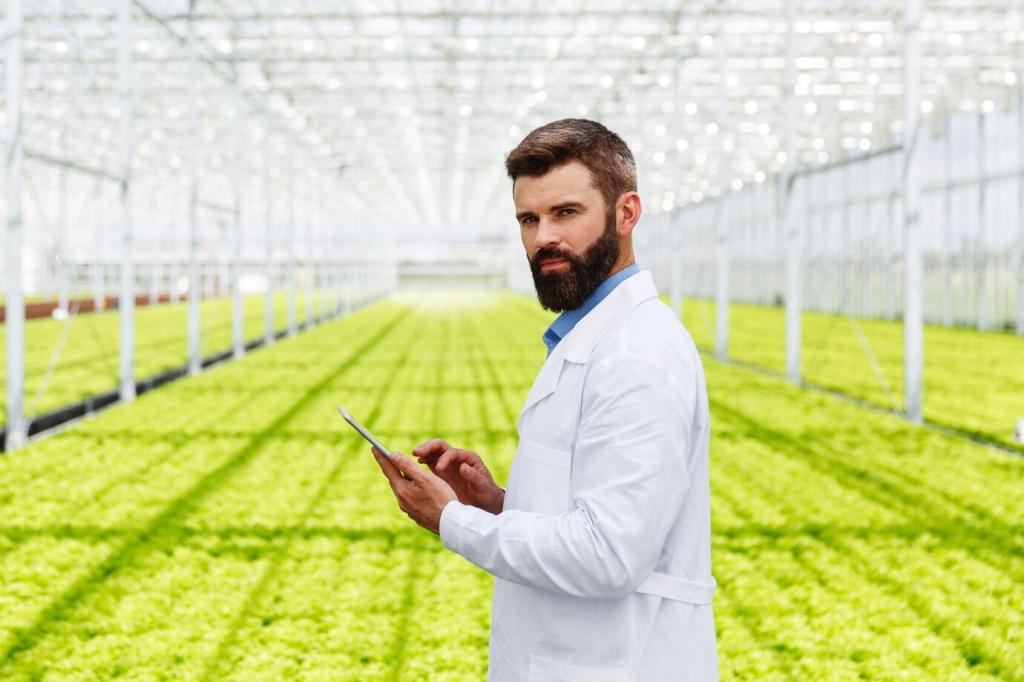
Smart Solutions for Urban Agriculture Challenges
Urban agriculture faces unique challenges due to limited space, resource constraints, and complex city environments. However, smart solutions are revolutionizing how food is grown in cities by leveraging technology, innovative practices, and community-driven approaches. These solutions are making urban farming more efficient, sustainable, and accessible, enabling cities to meet the demands of growing populations while maintaining environmental integrity. Through the integration of digital tools, advanced farming techniques, and collaborative models, urban agriculture is poised to transform city landscapes and food systems for a healthier, greener future.
Sensors and IoT for Precision Farming
With the implementation of Internet of Things (IoT) devices and sensors, urban farmers can continuously monitor soil moisture, nutrient levels, temperature, and plant health. These real-time data points enable precise irrigation and fertilization, reducing waste and ensuring that crops receive optimal care. The use of smart sensors also facilitates early detection of diseases or pests, allowing for timely intervention and minimizing crop loss. As a result, urban farmers can achieve higher efficiency, conserve resources, and increase their harvests within limited space.
Automation in Urban Greenhouses
Automation is dramatically transforming urban greenhouses by streamlining traditionally labor-intensive tasks such as watering, climate control, lighting, and harvesting. Programmable systems equipped with robotics and machine learning algorithms can adapt to changing environmental conditions, ensuring plants receive ideal growing conditions at all times. By automating complex processes, urban farmers are able to maximize productivity, maintain consistent crop quality, and reduce operational costs, making urban agriculture more commercially viable and sustainable.
Data-Driven Decision Making
Data analytics platforms enable urban farmers to leverage information from various sources, including weather forecasts, historical yield records, and market trends. By analyzing this wealth of data, farmers can make informed decisions about planting schedules, crop selection, and resource allocation. Predictive analytics empower them to anticipate challenges and dynamically adjust their strategies, resulting in optimized operations and reduced risks. This data-driven approach not only boosts productivity but also ensures urban agriculture remains adaptable in the face of ever-changing city environments.
Space Optimization Techniques
Vertical Farming Innovations
Vertical farming allows crops to be grown in stacked layers, effectively multiplying the available growing area within a compact footprint. With specially designed shelving systems, hydroponics or aeroponics, and precisely controlled lighting, these farms can produce greater yields per square meter than traditional methods. The controlled indoor environment shields crops from urban pollutants and adverse weather, while efficient resource use ensures sustainability. As cities grapple with density and space scarcity, vertical farming stands out as a scalable model for fresh, local food production.
Rooftop and Wall-Based Gardens
Urban spaces often lack traditional farmland, but innovative rooftop gardens and green walls are transforming underutilized real estate into flourishing farms. Rooftop gardens harness sunlight and rainwater to cultivate a diverse array of crops, while vertical green walls enable food production on the exteriors of buildings. These solutions not only supply fresh produce but also shade buildings, reduce heat islands, and improve air quality. By reclaiming unused spaces for agriculture, cities can enhance both food security and urban livability.
Modular and Micro-Farming Solutions
Modular farming systems such as container farms and portable planters are gaining popularity as they can be deployed virtually anywhere, from abandoned lots to small balconies. These self-contained units often incorporate hydroponic or aquaponic systems, making them highly efficient in water and nutrient use. Their flexibility allows urban dwellers and entrepreneurs to customize setups according to available space and market demands, democratizing food production and showing that healthy, local food can be grown in even the smallest urban nook.


